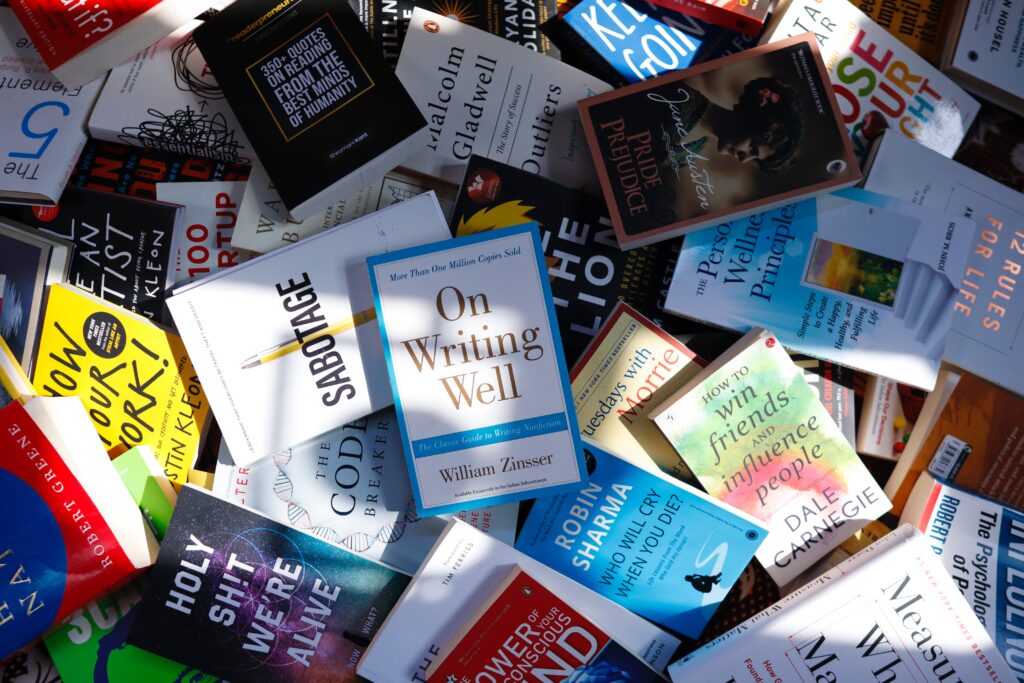Ever wondered how great writers can provoke specific feelings in their readers?
Think of that time when you were reading a novel, and at some point, you felt sucked into the story like you were almost part of it…
Or maybe that sense of imagining the characters of the story as real people whom you would — or maybe wouldn’t — want to meet…
Can’t remember? Read this excerpt carefully:
“Look — ” he murmured, holding out his arm to stop Malfoy. Something
bright white was gleaming on the ground. They inched closer. It was the unicorn all right, and it was dead. Harry had never seen anything so beautiful and sad. Its long, slender legs were stuck out at odd angles where it had fallen and its mane was spread pearly-white on the dark leaves.
Harry had taken one step toward it when a slithering sound made him freeze where he stood. A bush on the edge of the clearing quivered. . . . Then, out of the shadows, a hooded figure came crawling across the ground like some stalking beast. Harry, Malfoy, and Fang stood transfixed. The cloaked figure reached the unicorn, lowered its head over the wound in the animal’s side, and began to drink its blood.
J.K. Rowling – Harry Potter and the Sorcerer’s Stone
Not only was the next line in the book, “AAAAAAAAAAARGH!”, but I am sure we all had a bit of that reaction in our minds as we read the last sentence of this excerpt.
How is it that our minds almost synchronized with a character in the story?
What makes a story so riveting that we can have such a connection with its characters?
So, I did some digging and found something that took me down a rabbit hole.
This connection is not just a feeling you have. It is much more than that.
It is, as Rihanna once said, “as real as you and me.”
It is so real that it has been scientifically studied for 30 years now.
And to satisfy the geek in me, I went and looked it up on Google Scholar, the search engine for academic literature.
I found over 250,000 scientific papers on the topic!It is crazy that I’ve only come to know about it now…
But I can tell you for sure; it is phenomenal.
And it all started with a monkey.
The first mention of the secret
It was the summer of 1992, and the sun had just risen majestically from behind the frescoed Romanesque Parma Cathedral in Parma, Italy. The sunrays pierced through the morning mist that spread gently over the city.
Just a couple of blocks away, at the University of Parma, a different ray of light was emanating. It was a discovery that would change our understanding of how we communicate with one another.
A group of ardent researchers led by neurophysiologist Giacomo Rizzolatti realized something quite bizarre inside the brain of a macaque monkey.
They were observing the monkey’s brain activity as it went about doing specific actions. From their studies, they were aware that when the monkey grabbed an object with its hand, distinct neurons fired up in its brain.
But much to their surprise, when the monkey watched one of the researchers pick that object up, the same neurons fired up again.
As abstract as that might seem to a non-scientist, this meant that the monkey’s brain reacted in the same way to doing an activity and watching that same activity.
“We were lucky, because there was no way to know such neurons existed, but we were in the right area to find them.”
G. Rizzolatti
That discovery became the foundation of what they later called mirror neurons.
Mirror neurons are cells in our brains that respond equally when we perform an action and when we see someone else doing it.
In other words, they mirror the behavior of someone else’s neurons as we observe them.
In a way, it’s that click or connection you have with someone you’re seeing or talking to.
Scientists have stated that these brain cells can explain empathy, autism, and even language evolution.
Famous neuroscientist V.S. Ramachandran described the mirror neurons discovery as one of the “single most important unpublicized stories of the decade.”
So, how does this apply to reading?
Read the full article on Medium.com, published in Illumination.





